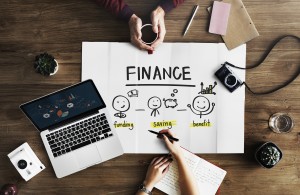Tips to run Efficient, Effective Professional Meetings
Posted on | March 2, 2018 | No Comments
As one goes higher up in the hierarchy in an organisation, one of the essential management skills is the ability to organise and conduct productive and results-oriented meetings. In my professional career spanning almost two decades, I’ve had the opportunity to be part of lots of really effective meetings and some not-so-good ones. My definition of a “successful meeting” is one in which all attendees can leave with the feeling of having accomplished the stated objectives of the meeting with clear action points on the way forward. Based on my experiences, I’ve listed some tips to ensure that you can conduct effective and efficient business meetings.
The eventual success (or otherwise) of a meeting is dependent on not just what happens during the meeting; what happens before and immediately after the meeting also play an important role in determining the final outcome. So, let’s look at what needs to be done at each of these stages.
Pre-meeting actions
Define objectives and the agenda: Be clear about the objectives and desired outcome from the meeting. Use this to specify the agenda for the meeting, which should be circulated to all attendees before the meeting, so that they can come adequately prepared.
Identify the audience/invitees for the meeting: You don’t want to invite people who may not have much to do with the items on the agenda and waste their time or miss out on inviting people who may have a stake in the project.
Book the meeting in everybody’s diary: Arranging meetings amongst people of different teams, especially multi-locational teams, can be a challenge. So, it is best to check the availability of the relevant folks and book time in their diaries, say by sending an Outlook Calendar to invite.
Assess the attendees’ level of familiarity with the subject matter of the meeting: Typically, from my experience, almost 70-80% of meetings will comprise of people with a very diverse audience with significantly different levels of familiarity with the topic of the meeting. This understanding is important for you to be able to conduct the meeting or present to them in a manner that they can easily understand the topics being discussed. Depending on the mix or extent of the difference in the level of understanding of the topic, additional background materials may need to be presented.
Prepare relevant materials for the meeting and share them with the attendees well in advance: The materials required for each meeting will vary. For example, use workflow diagrams if applicable or relevant. In my role in web-based product development, workflow diagrams are an effective means to communicate what we require a particular system to do or how a particular system will work. This helps bring all participants to the same level of understanding.
It is also useful to share options/ spreadsheets as relevant— which describe the options, highlights the pros/cons, effort entailed, cost, launch dates (as applicable). Prepare recommendations. It is important to position the material well.
Send the materials prior to the meeting—with reasonable lead time- to the invitees for their review
During the meeting
Be organised to start the meeting on time: On the day of the meeting, it is important for the meeting organiser to ensure that they are fully set-up to commence the meeting on time. So, if you are expecting to need to use the projector in the meeting room, or dial in other participants for a video conference, ensure that all of these are set up before the actual meeting time. This saves a lot of time for everyone concerned.
Start the meeting with a roll-call of all attendees/ participants and re-stating the objectives. Remind the audience the duration of the meeting and the meeting agenda. Setting the stage for meeting well by clearly outlining the outcomes expected is a great way to start a meeting.
Walk people through materials: Address questions or provide clarifications during or at the end of the meeting. Personally, I recommend taking all questions or having an open discussion after a presentation rather than during one.
Give an opportunity for people to speak – encourage all members to participate, by giving little nudges. Not everyone is expressive enough and some attendees may need to be prodded more than others to get their inputs.
Keep track of time: Lead towards decisions or clearly defined action items with timelines. Bring the focus back to the meeting in case of digressions. If there are serious disagreements that can derail the meeting, you will need to take a call on-the-fly whether a decision can be deferred on the contentious matter or if it needs to be addressed immediately. If the way forward is the latter, then work towards identifying the root cause of the disagreement and what options are available to get to an agreement. Ensure that there is an “advance warning” about the time for the meeting to end.
Always ensure detailed minutes: Capture key inputs, comments, feedback, concerns from the participants. This is really important and one of the reasons why many people claim meetings to be a waste of time. Often the discussion points and follow-up action points are not recorded and/or ignored, which eventually results in a lot of wasted time.
Check if the objectives are being met: Along the way, continue to monitor whether the meeting is proceeding to achieve the stated objectives. Look at getting agreements.
Close the meeting restating what has been agreed on, and the steps including actions: Thank everyone for their contributions and inputs. Indicate the tentative timeframe for the next meeting as necessary.
Post-meeting follow-ups
Send out an e-mail of the minutes: Summarise the discussion with the agreed upon to-dos and the persons accountable.
De-brief key team members who may or may not have attended the meeting: Summarise the outcome and send to the group that attended the meeting.
Repeat the process for the follow-up meeting.
I hope these essential meeting tips will be useful and will help you run good meetings. I have no doubt that a manager who can run effective and results-oriented meetings will definitely make faster career progression.
–By Seema Nirwal
Seema Nirwal is Head of Customer Service & Buyer Needs Analysis at one of Asia’s largest B2B media companies. In her previous role as head of product development, she managed multi-functional, multi-locational, multi-cultural project teams.
Comments
Leave a Reply





